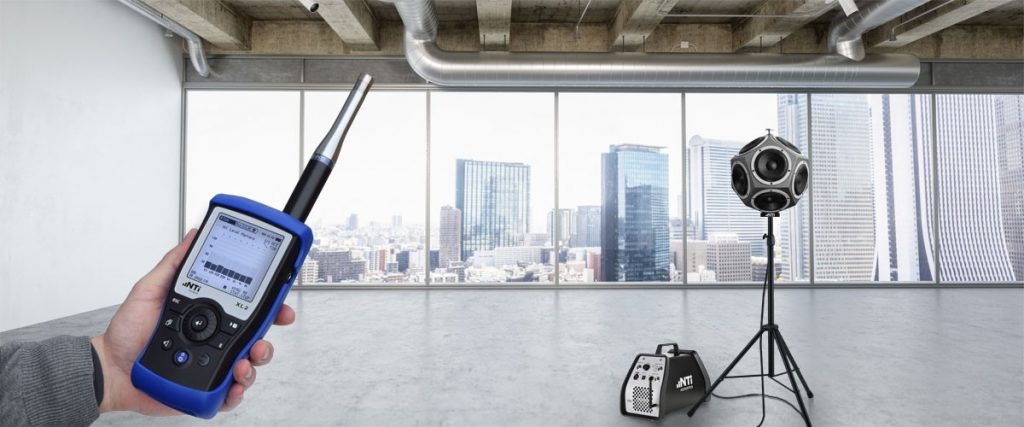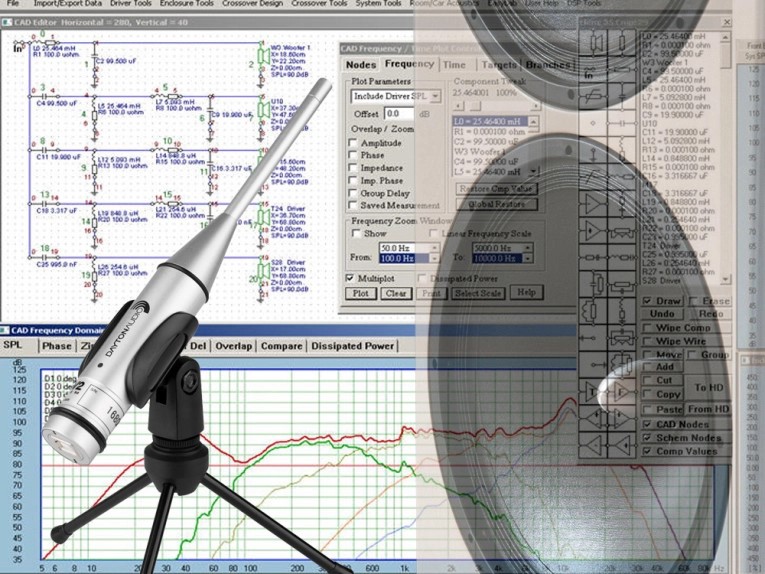How to calculate acoustic value in a building
In addition to providing insulation and acting as a substrate for roofing, in many situations roof insulations also need to provide noise reducing characteristics. Building constructions near airports or other high noise areas require noise reduction principles to be employed. Today, the noise reduction properties of roof insulation must be known to properly design structures in high noise areas. Designing constructions to control noise requires, at a minimum, a basic understanding of terms and methods used to develop design values for various constructions. Sound travels through a building component because it sets up vibrations in that component. Almost all building materials are sufficiently elastic to transmit sound. Therefore, almost all building materials can be set into motion by sound waves impinging upon them. Once construction is set into vibration, it will transmit sound from the source through the construction and the sound will be heard on the opposite side of the construction. The result is sound transmission through construction. Sound travels through a building component because it sets up vibrations in that component. Almost all building materials are sufficiently elastic to transmit sound. Therefore, almost all building materials can be set into motion by sound waves impinging upon them. Once construction is set into vibration, it will transmit sound from the source through the construction and the sound will be heard on the opposite side of the construction. The result is sound transmission through construction. The ability of a construction to transmit sound is dependent upon its mass. The higher it’s mass, the more it is resistant to vibration caused by sound. If the mass were extremely small, even faint sound pressure could move it and thus transmit sound.
In addition to mass, numerous other factors must be considered in proper sound control design. Such factors include background noise level, and transmission through floors, walls and penetrations through the construction (which also includes insulation joints). An acoustical engineer should be consulted when dealing with acoustical design.
Acoustical terms that are important to know before calculating acoustic values:
- Sound Pressure Level:
When it comes down to it, your ears are pretty amazing. They allow you to hear sounds as quiet as a whisper and as loud as a jet engine. How exactly do sound waves get transmitted to your ears so that you can hear?
It starts with a vibration in the air. A whisper only vibrates the air a little bit, while a jet engine vibrates it A LOT. This vibration creates a pressure wave that passes through the air, spreading out in all directions as it goes. Sound pressure is the pressure measured within the wave relative to the surrounding air pressure. Loud sounds produce sound waves with relatively large sound pressures, while quiet sounds produce sound waves with relatively small sound pressures.
Sound pressure, like other kinds of pressure, is commonly measured in units of Pascals (Pa). The quietest sound that most people can hear has a sound pressure of 2 x 10-5 Pa, so this pressure is called the threshold of human hearing.
- An audio frequency or audible frequency:
is a periodic vibration whose frequency is in the band audible to the average human. The SI unit of audio frequency is the hertz (Hz). It is the property of sound that most determines pitch. The generally accepted standard range of audible frequencies for humans is 20 to 20,000 Hz, although the range of frequencies individuals hear is greatly influenced by environmental factors. In air at atmospheric pressure, these represent sound waves with wavelengths of 17 meters (56 ft) to 1.7 centimetres (0.67 in). Frequencies below 20 Hz are generally felt rather than heard, assuming the amplitude of the vibration is great enough. High frequencies are the first to be affected by hearing loss due to age or prolonged exposure to very loud noises.
- Reverberation time:
is the time required for the sound to “fade away” or decay in a closed space. Sound in a room will repeatedly bounce off surfaces such as the floor, walls, ceiling, windows or tables. Reverberation is one of the most significant acoustic properties of a room. Knowing the reverberation time is essential in characterizing rooms, be they performance spaces, ordinary rooms or open office spaces.
The laboratory method to measure acoustical values to use special instruments.
Also, there are some programs ”acoustics calculator” which provide you with a quick overview of the acoustics in a room. Just type in your room data – measurements and material – and the acoustics calculator generates a precise overview of reverberation time, absorption area as well as other relevant information about acoustics. You can have the report sent to your e-mail or you can print it – either on paper or as a PDF. First select the shape of the room, and second type in length, width, and height. The total area of ceiling, floor, walls, doors and windows is automatically transferred to the further calculation. The total area for doors and windows will automatically be subtracted from the total wall area. Then you can get information about the sound level and its distribution in the building. On the other hand, you can know the exact amount of noise reduction the building needs so that desired special acoustic panels.
Different collection of acoustic panels for celling, walls, flour, and furniture with changing the materials (foam, fabric, metal, wooden, and plastic), color, and style Acoustima® acoustic panel by Seatup Turkey® products are recommended too.




